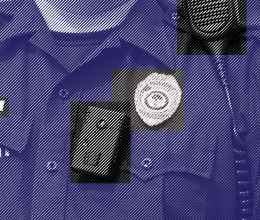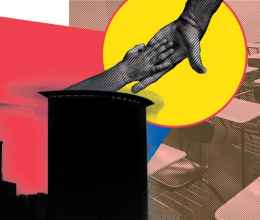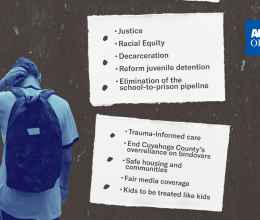COLUMBUS – Last week, Governor DeWine announced that he requested judges release 38 people from Ohio prisons in response to the growing COVID-19 crisis in the state’s corrections facilities. DeWine announced more releases today (167), with recommendations now totaling 205 individuals, but it’s not nearly enough to address the mounting risk of widespread outbreak. The ACLU of Ohio, the Ohio Organizing Collaborative and Policy Matters Ohio jointly release the following statement:
No matter where we live, how much we earn, or whether we are Black white or brown, Ohioans are joining together to keep each other safe and healthy. By taking aggressive action, Governor DeWine has slowed the spread of the COVID-19 pandemic and protected the lives of many Ohioans. But we’re not all safe until everyone is safe, and the governor has overlooked the people who are incarcerated in, and work in, Ohio’s jails, prisons, detention centers and youth facilities, and the friends and families who love them.
The coronavirus spreads through contact, and there is no effective way to socially distance in a prison or jail - especially not when Ohio’s prisons are at 132% capacity. There are hourly reports about new COVID-19 positive cases in Ohio prisons and jails, and even death in federal facilities.
Ohio's overcrowded prison system was designed to hold 38,000 people, but there are currently almost 49,000 Ohioans behind bars. We applaud Governor DeWine for taking the first step of recommending the release of 205 individuals, but he would need to release around 10,000 just to reach 100% capacity.
In a testimony submitted to the Ohio Organizing Collaborative, Kwanza Maxwell, whose father is incarcerated in Noble Correctional Facility, said she fears for his health:
‘My dad is an insulin dependent diabetic and kidney recipient who takes a number of drugs to keep him alive, two of which suppresses his immune system which unfortunately puts him at a greater risk of contracting the COVID-19 virus. He is currently at a facility who houses their inmates in an open dorm style room with bunks, which makes it impossible to practice social distancing. My father is a good man who is tremendously loved, has a great support system who was not sentenced to death and does not deserve to die while serving his very harsh sentence.’
Data reflects that the COVID-19 crisis is hitting Black people and other communities of color the hardest. That’s due to longstanding structural barriers to employment opportunities, deeply entrenched segregation, and health care disparities. The criminal justice system disproportionately targets Black Ohioans through aggressive policing and tougher sentencing. As a result, Black people make up a larger share of the state’s prison population. Allowing the COVID-19 pandemic to run rampant in Ohio’s corrections facilities will exacerbate racial disparities.
Governor DeWine can show that we really are ‘all in this together’ by protecting the people who are incarcerated in Ohio’s jails, prisons and youth detention centers and the people who work there. He has the power to immediately release people from these facilities, with a focus on those with the lowest risk of recidivism and those with the highest vulnerability if they contract COVID-19 while incarcerated, including people with: chronic health conditions, people over the age of 60, people with six months or less remaining on their sentences, people serving for technical violations or drug possession, and people serving time for F4 or F5 offenses.
It is not too late to save more lives, but to do so Governor DeWine must lead our state to provide for the safe and responsible release of broader categories of incarcerated people. We are Ohioans, and because we are in this together, that means we must be all in for all of us.









